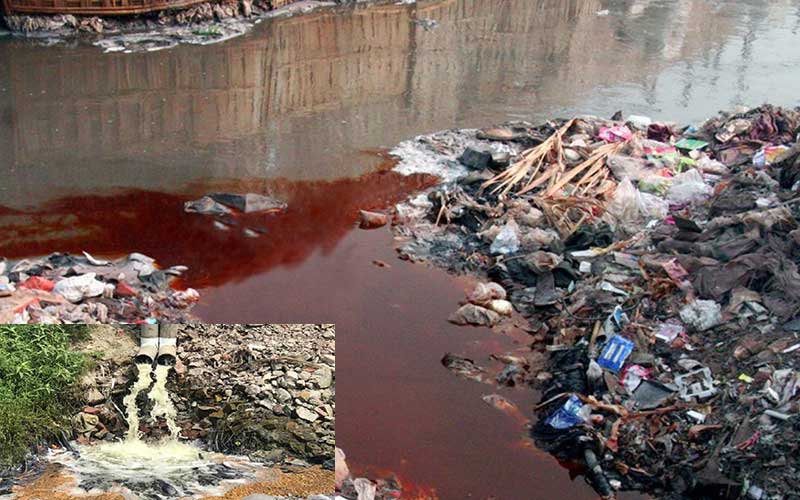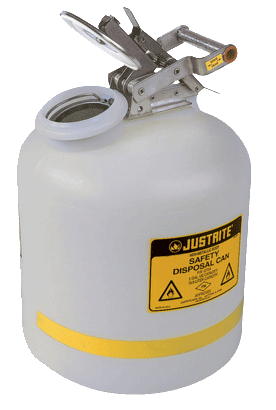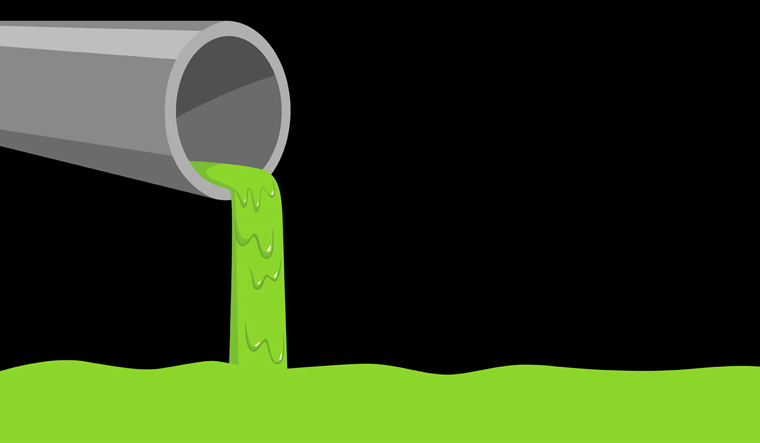Cutting-edge Industrial Wastewater Treatment Solutions: Securing the Environment
Cutting-edge Industrial Wastewater Treatment Solutions: Securing the Environment
Blog Article
How Fluid Waste Disposal Works: A Thorough Summary of Techniques and Technologies Used

Introduction of Liquid Waste Kind
The complexity of liquid waste kinds requires a thorough understanding of their attributes and effects for disposal. Liquid waste can generally be classified right into several kinds, consisting of commercial, municipal, farming, and contaminated materials. Each classification displays unique homes, calling for details management techniques to minimize ecological and wellness threats.
Industrial liquid waste stems from producing procedures and typically consists of a variety of impurities, such as hefty metals, solvents, and natural substances. Community fluid waste, mainly consisting of wastewater from households and commercial facilities, consists of raw material, nutrients, and microorganisms (industrial wastewater treatment). Agricultural fluid waste, including runoff from farms, might include fertilizers, pesticides, and animal waste, posturing dangers to water top quality and ecological communities
Harmful liquid waste is identified by its poisoning, sensitivity, or prospective to trigger harm. Understanding these varied fluid waste types is essential for establishing reliable disposal techniques and making sure compliance with environmental laws.
Physical Treatment Techniques

Screening is the first action, where bigger fragments and debris are removed from the fluid waste using screens or grates. This process shields downstream devices from damages and ensures smoother procedure. Adhering to screening, sedimentation makes use of gravitational force to different solids from liquids. In sedimentation storage tanks, much heavier bits work out near the bottom, creating a sludge layer, while the clarified fluid can be additional treated.
Filtration is one more necessary method that involves passing the fluid with porous products, such as sand or membranes, to record smaller sized bits. This action enhances the quality of the fluid, making it suitable for subsequent therapy processes.

Chemical Therapy Methods
Chemical therapy strategies are vital for properly managing liquid waste, particularly in resolving dissolved and colloidal pollutants that physical methods may not adequately remove. These methods use various chemical representatives to counteract, precipitate, or change dangerous compounds right into much less harmful forms.
One common approach is coagulation and flocculation, where chemicals such as alum or ferric chloride are included in advertise the aggregation of put on hold particles. This procedure boosts sedimentation, enabling easier elimination of the resulting sludge. Furthermore, oxidation procedures, employing agents like chlorine or ozone, are employed to break down complex organic substances and microorganisms, rendering the waste more secure for discharge or more therapy.
Neutralization is another crucial method, which adjusts the pH of acidic or alkaline waste streams to neutral degrees, stopping prospective damage to downstream systems and the atmosphere. over here Additionally, progressed oxidation procedures (AOPs) utilize combinations of oxidants and ultraviolet light to degrade persistent contaminants, accomplishing a higher level of therapy effectiveness.
Biological Therapy Procedures
Biological treatment processes play a crucial duty in the management of liquid waste by making use of microorganisms to decompose organic matter and decrease contaminant degrees. These processes can be extensively categorized right into cardio and anaerobic treatments, each using details microbial areas to attain effective waste deterioration.
Aerobic therapy involves making use of oxygen to facilitate the breakdown of organic materials by bacteria. This procedure is typically carried out in triggered sludge systems, where oygenation tanks provide a helpful atmosphere for microbial growth, causing the oxidation of organic contaminants. The resultant biomass can be divided from dealt with effluent via sedimentation.
In contrast, anaerobic therapy takes place in the absence of oxygen, counting on different bacteria to damage down natural matter. This method is specifically advantageous for high-strength waste, as it generates biogas, a renewable resource resource, while decreasing sludge production. Technologies such as anaerobic digesters are regularly utilized in local and commercial applications.
Both anaerobic and cardiovascular biological therapies not only minimize the environmental impact of fluid waste yet likewise facilitate source recuperation, making them crucial components of lasting waste monitoring strategies. Their flexibility, performance, and efficiency sustain their extensive implementation throughout numerous sectors.
Emerging Technologies in Disposal
Ingenious approaches to fluid garbage disposal are rapidly progressing, websites driven by improvements in technology and a boosting emphasis on sustainability. Amongst these emerging modern technologies, membrane layer bioreactors (MBRs) have actually gotten traction for their capacity to integrate biological therapy with membrane layer filtration, leading to premium effluent that can be reused in various applications. MBRs allow smaller footprints and much more effective operations compared to traditional systems.
An additional promising advancement is using anaerobic digestion integrated with nutrient recovery modern technologies, which not just treats liquid waste yet also creates biogas and recoups important nutrients like nitrogen and phosphorus. This twin advantage boosts source effectiveness and reduces environmental effect.
Additionally, advanced oxidation processes (AOPs) are being adopted for the degradation of complicated organic toxins. These methods make use of effective oxidants and drivers to damage down pollutants at the molecular level, supplying an extremely effective option for difficult waste streams.
In addition, the combination of fabricated knowledge and machine understanding in waste monitoring systems is enhancing functional performance and predictive maintenance, leading to lowered prices and enhanced environmental conformity. These technologies show a substantial change in the direction of more reliable and sustainable liquid waste disposal methods.
Final Thought
To conclude, effective fluid garbage disposal requires an extensive understanding of numerous methods and innovations. The combination of physical, chemical, and biological therapy techniques ensures the reliable monitoring of varied waste types. Additionally, the appearance of cutting-edge technologies boosts therapy efficacy and promotes sustainability in waste management techniques. By continually progressing these techniques, it ends up being possible to attend to the expanding obstacles connected with liquid waste, eventually adding to environmental management and source healing.
Liquid waste disposal is a critical facet of ecological monitoring, requiring an extensive understanding of numerous methods and technologies tailored to different waste types. Liquid waste can extensively be classified into a number of kinds, including industrial, local, farming, and you can check here dangerous waste. Agricultural fluid waste, including overflow from ranches, might consist of fertilizers, pesticides, and pet waste, positioning dangers to water top quality and environments.
Numerous physical therapy methods play an important function in managing liquid waste properly - industrial wastewater treatment.In conclusion, effective liquid waste disposal demands a detailed understanding of numerous strategies and modern technologies
Report this page